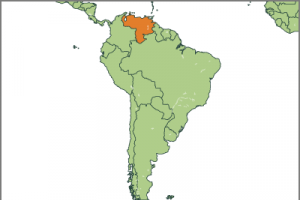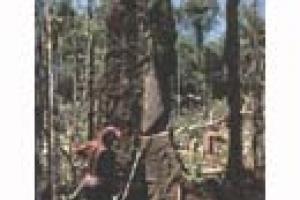Venezuela
Other information
29 April 2009
In 1999, shortly after he was elected, President Hugo Chávez received a letter from WRM (seehttp://www.wrm.org.uy/bulletin/22/Venezuela2.html) in which we expressed our deep concern over the serious impacts on peasant communities in the state of Portuguesa generated by the monoculture tree plantations operated by Smurfit Cartón de Venezuela (a subsidiary of the Smurfit Kappa Group, a leading producer of cardboard for the European market)
Bulletin articles
16 October 2007
Between 8 and 13 October, fisher-folk organizations, artisanal gatherers, environmentalists and academics from 10 Latin American counties organized in Redmanglar International, met in the locality of Cuyutlan, State of Colima, Mexico.
During a whole week of work, it was reported that a policy for appropriation and use of coastal and marine spaces is being reaffirmed and strengthened worldwide, placing the economic interests of a few before ecosystem conservation sustaining the life and fundamental rights of local communities.
Bulletin articles
19 June 2007
With much song and dance, Agro-fuels have quickly found a place on the agendas of the governments of the North…and of the South. They promise energy independence, business, a solution to global warming, business, more foreign currency, business!!!
Bulletin articles
2 July 2006
Here below are the conclusions submitted in a travel report (available in Spanish, at:http://www.wrm.org.uy/paises/Venezuela/Gira2006.pdf) on the investigation carried out recently by 4 representatives of the Latin American Network against Monoculture Tree Plantations in the area where the so called "Uverito plantations" are located. These are some 600,000 hectares of pine plantations in the States of Monagas and Anzoategui. In 2003, SmartWood certified 12 plots covering a total of 139,650 hectares, owned by Terranova de Venezuela (TDV) and which form part of those plantations.
Bulletin articles
26 December 2004
Exactly six years ago we had the opportunity to visit the State of Portuguesa in Venezuela to obtain first hand information on the situation of the local populations in Morador and Tierra Buena regarding the Smurfit Carton de Venezuela’s vast eucalyptus, pine and gmelina (Gmelina arborea) plantations. This company belongs to the transnational company Smurfit Corporation of Irland.
Other information
27 October 2004
The 21,000 Yanomami who live in some 360 widely scattered settlements in the forested mountains and hills between Venezuela and Brazil were largely uncontacted by westerners until the middle of the 20th century. In their myths, the Yanomami recall a far distant time when they lived alongside a big river, ‘before we were chased up into the highlands’ but by the time their existence is first recorded, in the mid-18th century, they were already well established in the Parima hills between the Rio Branco and the Upper Orinoco.
Bulletin articles
29 July 2004
Aguide is located in the coastal zone between the Zamuro and Uvero Points, and is part of the Parish of La Pastora, Acosta Municipality, in the northeast of the State of Falcon.
Bulletin articles
17 October 2003
The Imataca Forest Reserve’s native forest, located in the extreme east of the country, of imposing scenic beauty and rich biological diversity, fulfils a fundamental role in soil and water protection – of the rivers Yuruan, Cuyuni, Orinoco, Brazo Imataca, Rio Grande, Botanamo, Barima, Orocaima – and is a cultural and sacred reserve for the Indigenous Peoples.
Bulletin articles
31 July 2003
Over the past 15 years, the Colina municipal authorities backing tourism development have granted lands bordering the De la Vela Mangrove. The consequent building of housing and shops has implied that these lands were filled with rubble at the expense of the ecosystem and the space necessary for mangrove growth.
Bulletin articles
7 September 2002
The Caura river in Venezuela is the last large affluent of the Orinoco which has not been polluted, carved up, dammed or diverted by mining, roads, logging and large-scale development projects. The upper reaches are home to two ethnic groups, ‘Amazonian Indians’.
Other information
18 July 2002
Only available in Spanish
Publicación de Censat-Agua Viva en ocasión de la Cumbre Mundial de Johannesburgo.
Amazonía: Selva y Bosques diez años después de Río


